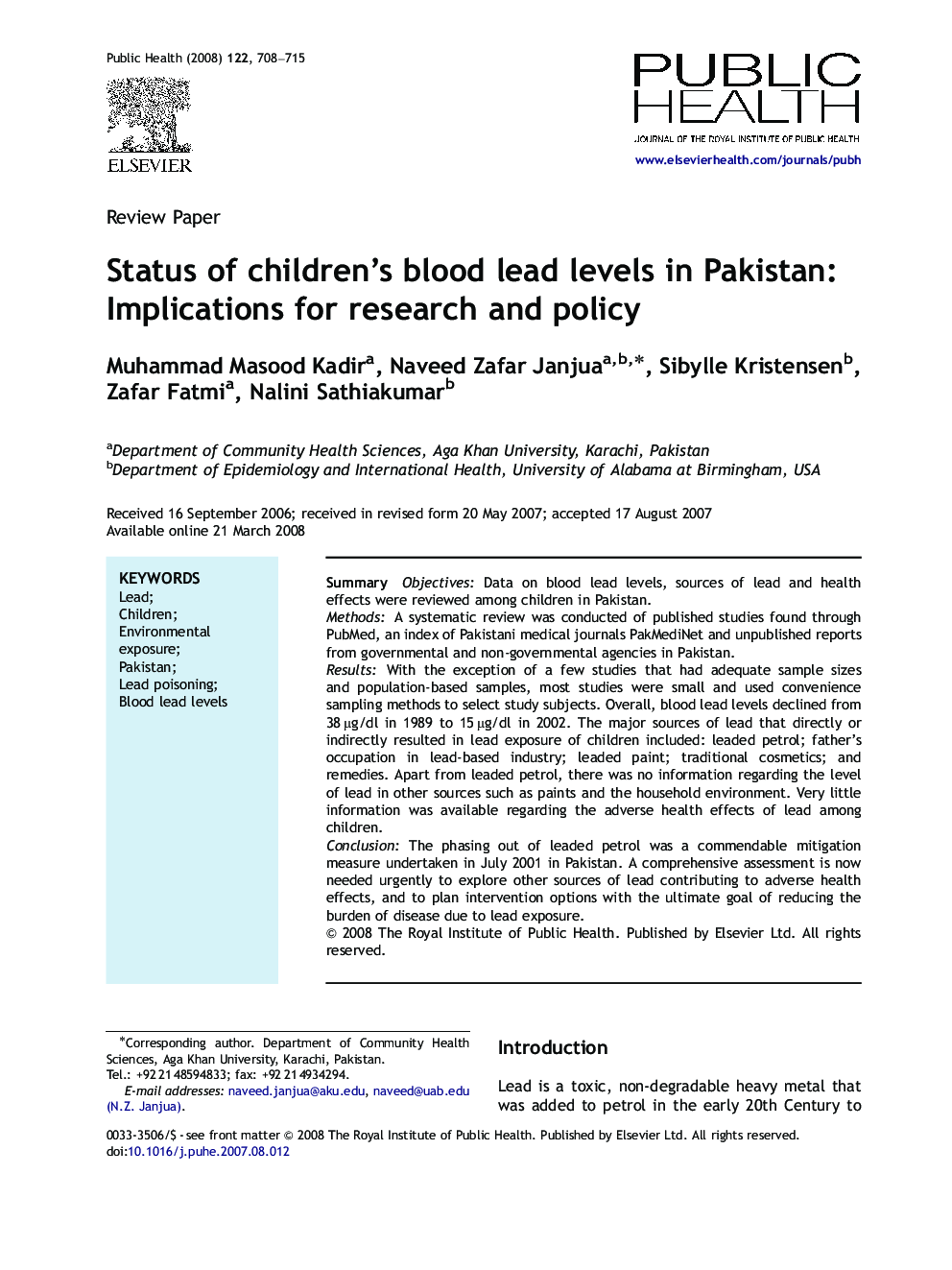| Article ID | Journal | Published Year | Pages | File Type |
|---|---|---|---|---|
| 1088212 | Public Health | 2008 | 8 Pages |
SummaryObjectivesData on blood lead levels, sources of lead and health effects were reviewed among children in Pakistan.MethodsA systematic review was conducted of published studies found through PubMed, an index of Pakistani medical journals PakMediNet and unpublished reports from governmental and non-governmental agencies in Pakistan.ResultsWith the exception of a few studies that had adequate sample sizes and population-based samples, most studies were small and used convenience sampling methods to select study subjects. Overall, blood lead levels declined from 38 μg/dl in 1989 to 15 μg/dl in 2002. The major sources of lead that directly or indirectly resulted in lead exposure of children included: leaded petrol; father's occupation in lead-based industry; leaded paint; traditional cosmetics; and remedies. Apart from leaded petrol, there was no information regarding the level of lead in other sources such as paints and the household environment. Very little information was available regarding the adverse health effects of lead among children.ConclusionThe phasing out of leaded petrol was a commendable mitigation measure undertaken in July 2001 in Pakistan. A comprehensive assessment is now needed urgently to explore other sources of lead contributing to adverse health effects, and to plan intervention options with the ultimate goal of reducing the burden of disease due to lead exposure.
